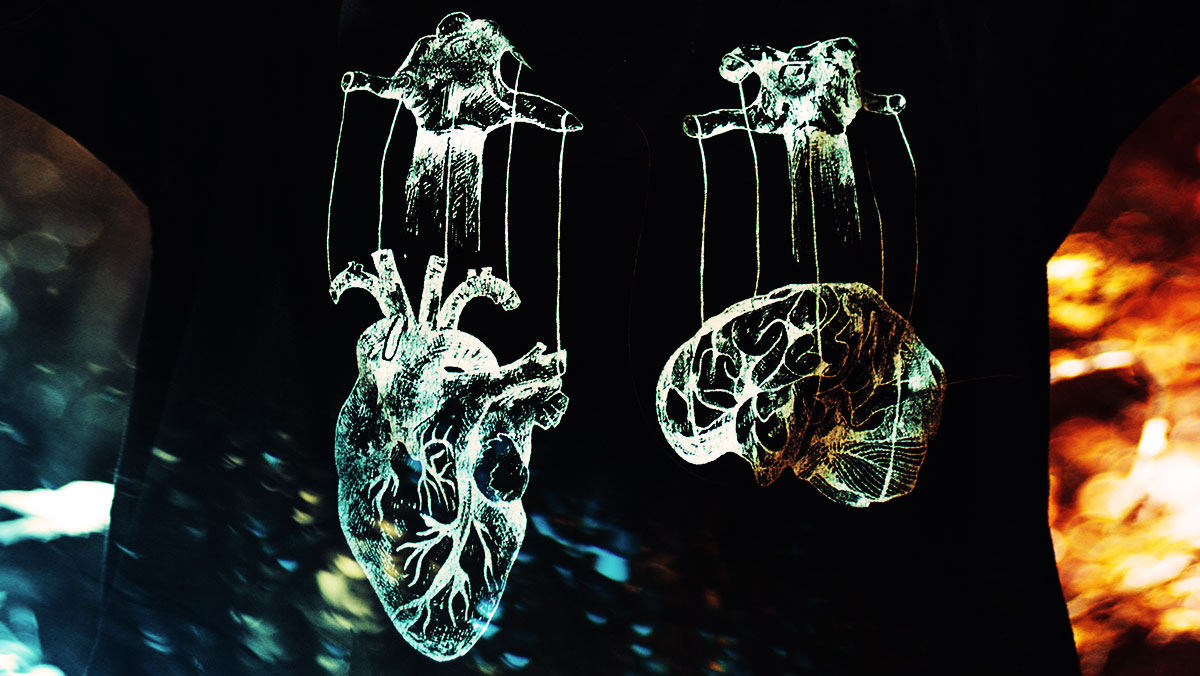
One of my [Kevin] favorite books on how the mind works is Predictably Irrational – The Hidden Forces that Shape Our Decisions, by Dan Ariely. Early on, it opened my eyes to behavioral science understanding, which forever changed how I think about branding and marketing.
Recently, when speaking at a conference, I was inspired by another speaker, Aline Holzwarth, who I later found out is a Principal at Dan Ariely’s applied behavioral science lab, The Center for Advanced Hindsight at Duke University. She is also Head of Behavioral Science at Pattern Health, a digital health platform that leverages behavioral science to help patients stick to their care programs, and co-founder of the Behavior Shop, a behavioral science advisory company.
Instantly, I knew I wanted to interview Aline for Brandingmag to more deeply understand the nuances of motivation theory as it relates to consumer behavior and brand loyalty. Aline is an applied behavioral scientist, specializing in digital health research and scientifically informed product design. Her beste online casino training is in psychology and business, and her experience working in research and healthcare – all that has given her the interdisciplinary lens necessary to share the complexities of decision-making in the real world.
Brandingmag: As a behavioral scientist, what motivates you in your work?
 Aline Holzwarth: Like any good behavioral scientist, I’m just fascinated by human behavior. I want to understand as much as I can about what makes people tick, and the scientific method is clearly the best way to do so. I’ve been smitten with the beauty of experimentation since my first intro to psychology class, and I think that the methods of behavioral science have so much potential to get to the core of why people do the things they do.
Aline Holzwarth: Like any good behavioral scientist, I’m just fascinated by human behavior. I want to understand as much as I can about what makes people tick, and the scientific method is clearly the best way to do so. I’ve been smitten with the beauty of experimentation since my first intro to psychology class, and I think that the methods of behavioral science have so much potential to get to the core of why people do the things they do.
Bm: Much of the work of the Center for Advanced Hindsight (where you are co-Principal with Dan Ariely) is to make sense of irrational patterns of human behavior. Can you describe your focus and the impact of this work in a bit more detail?
AH: I think “impact” is the keyword here. The Center for Advanced Hindsight is set up in a way that allows our researchers to not only conduct research in the controlled environment of the lab but to get out and work with industry partners in the field. This work is so crucial because it touches real people living in the real world in a way that more traditional academic labs really can’t.
It’s one thing to find that people are, for example, averse to loss in a hypothetical scenario, but it’s a completely different and much more meaningful thing to find that people are loss averse when it comes to their actual behavior, such as when they are gaining or losing points for reaching their daily step goals. When we test and implement our ideas in the real world, we can have a much larger impact on society. That’s what the Center for Advanced Hindsight is all about.
Bm: It’s been said, by many behavioral scientists, that people buy on emotion and justify with logic. Can you share some insight as to why this happens?
AH: Many of our decisions are guided by the automatic parts of our brains – the instinctive, unconscious parts – or what Kahneman and Tversky call ‘System 1’ (in contrast with the reasoning parts which they coined ‘System 2’). Most often, we aren’t consciously aware of our decisions being taken over by System 1, and feel like we must be the kinds of rational decision-makers governed by System 2. It’s really hard to resist the feeling that we are reasoned decision-makers. So even when we make decisions based on our emotions, the logical parts of our brains step in and generate more “sensible” explanations for our behavior.
Some of the most fascinating studies in behavioral science show our natural tendency toward exactly this kind of confabulation, including my favorite of the classics: Richard Nisbett and Timothy Wilson’s 1977 paper “Telling more than we can know”. In a series of vivid examples, the researchers show how people don’t have access to their cognitive processes, despite their insistence that they do. People generally have very little insight into why they make the decisions they do.
Bm: Still, we have a tendency to over-rationalize when trying to be persuasive – sharing many “rational” benefits and what marketers call “reasons to believe”. Is this an irrational approach, and why do you feel that way?
AH: The big lesson from Nisbett and Wilson’s research, and many researchers who have come since them, is that we can’t rely on people’s introspection when it comes to their claims about why they have done something. We can rely on people to tell us what they’ve done, but not the reasons behind it. The important thing for marketers to understand is that so much of people’s thought processes are rooted in emotion and post-hoc justification rather than logic. Therefore, marketing appeals that rely on rationality will inevitably fall short.
Bm: What’s the relationship between our instinctive motivations and our conscious decisions and behaviors?
AH: This may come off as disheartening, but the majority of our lives are spent running on automatic, guided by these instinctive processes. Despite the sense that we are goal-driven actors, actively making decisions, we are a lot more like automatons, behaving today just like we did yesterday.
The researcher Wendy Wood has found that fully 43% of our behavior is habitual, made up of repetitive actions that occur regularly and outside our awareness. And Nobel prize-winning behavioral economist Daniel Kahneman estimates that the vast majority of our behavior is driven by System 1. A much smaller proportion of our behavior can be explained by conscious decision-making.
On the bright side, if we can use our reasoned, goal-oriented, System-2 selves to create environments for our automatic System-1 selves to thrive, we’ll be better off. We can design our lives to ensure that our automatic actions are in line with the goals, motivations, and desires of our intentional selves.
Bm: What should brand leaders know about intrinsic vs. extrinsic motivation?
AH: People often think of motivation as if it’s either-or, extrinsic or intrinsic. But motivation is a lot more complicated than that. Motivation lives on a continuum, with intrinsic motivation sitting on one end and a complete lack of motivation on the other. And there are lots of steps in between. The Self-Determination Theory of motivation from Richard Ryan and Edward Deci demonstrates this quite nicely, categorizing different types of motivation along a continuum. As the categories move toward intrinsic motivation, they become more and more autonomous – they are guided more by a person’s internal desires than external factors.
Bm: Since motivation is more complex than either intrinsic or extrinsic, what additional nuances should be considered as they relate to the self-determination continuum?
AH: All sources of motivation are not created equal. As you move toward more autonomous sources, getting closer to intrinsic motivation, behaviors become more and more sustainable. Completely extrinsic motivators fail as soon as they are removed. If you are getting paid to try a new product, for example, and find no joy in using it, you won’t continue to use the product once the incentive is removed. If you enjoy the experience of using the product, however, you are much more likely to continue using it without any incentive.
Bm: How would you recommend that brand leaders tap into motivation theory when designing their brand strategy and marketing efforts?
AH: Intrinsic motivation, where we engage in something for the sake of doing it because it is inherently satisfying, is the holy grail. But it’s also the most difficult to access, and the most resistant to external influence. Fortunately, just one step away from intrinsic motivation is what researchers call “integrated” motivation, which is all about identity. And I think that integrated motivation has the most practical potential for brand leaders. If your brand can tap into people’s strongly held identities, you have a much greater chance of success than the unreachable intrinsic motivation or trying to pull consumers in with more extrinsic forms of motivation.
Some brands are very successful at tapping into integrated motivations. Think of brands with strong identity ties, such as Yeti or Patagonia, which cater to consumers who think of themselves as outdoorsy people who appreciate a premium product. Simply carrying your Yeti bottle or wearing a Patagonia hat signals to others that you are an adventurous person who hikes and goes camping for fun and isn’t afraid to spend a bit extra to do so in style.
Or think of brands that cater to the environmentalist identity, such as Tesla, Toms of Maine, or Seventh Generation household cleaners. These brands tap into consumers’ desire to be – and be seen as – people who care about sustainability and the environment. These brands have really succeeded at associating their products with consumers’ integrated motivations. Other brands may, in reality, be just as environmentally friendly, but these few have tightly connected the identity to their brand in a way that appeals to consumers who share that identity.
Bm: What advice do you have for brand leaders who want to tap into the integrated motivations of consumers to build brand loyalty?
AH: Brands that successfully tap into integrated motivations have chosen a target customer and really focused on that segment. You can’t achieve the consumer-brand identity link if you attempt to appeal to all potential customers equally. You need to be willing to have your brand be unattractive to some in order for it to be particularly attractive to others. The upside, of course, is that brands with a tightly associated identity can leverage consumers’ integrated motivations and garner more loyalty from their chosen customer group.
Cover image source: amir riazipour